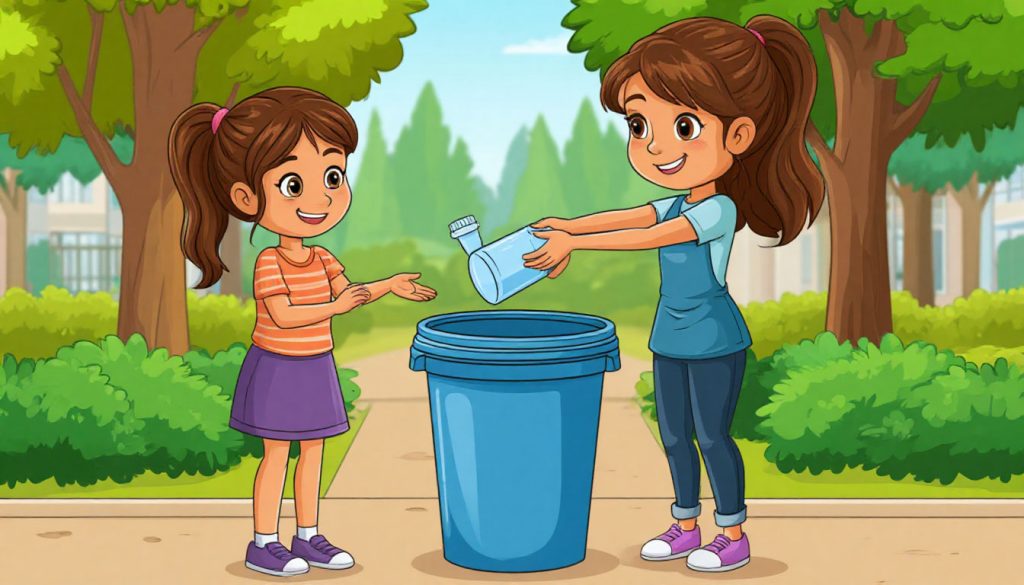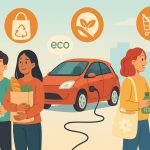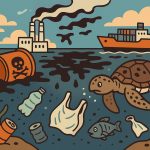Plastic is one of the most widely used materials in the modern world. From packaging and electronics to clothing and medical tools, it has revolutionized nearly every industry due to its light weight, durability, and low cost. But the same qualities that make plastic so useful have also created serious environmental challenges. This article explores what plastic is, how it’s made, where it’s used, and why it has become one of the biggest threats to the planet’s ecosystems.
What Is Plastic?
Plastic is a synthetic material made primarily from petroleum-based chemicals. It consists of long chains of molecules called polymers, which can be molded into virtually any shape. There are two main types:
- Thermoplastics – can be melted and reshaped (e.g., PET, HDPE)
- Thermosets – set permanently after being formed (e.g., epoxy resins)
Most plastic used today is non-biodegradable, meaning it can persist in the environment for hundreds of years.
Common Types of Plastic
| Type | Uses | Recycling Code |
|---|---|---|
| PET (1) | Bottles, food containers | Often recyclable |
| HDPE (2) | Milk jugs, shampoo bottles | Recyclable |
| PVC (3) | Pipes, cables, credit cards | Difficult |
| LDPE (4) | Plastic bags, wraps | Rarely recycled |
| PP (5) | Straws, takeout containers | Limited |
| PS (6) | Styrofoam, disposable plates | Not widely recycled |
| Other (7) | Mixed or unknown plastics | Not recyclable |
Benefits of Plastic
Plastic has many advantages that have led to its global spread:
- Inexpensive and mass-producible
- Lightweight and easy to transport
- Durable and long-lasting
- Hygienic for food and medical use
- Flexible in design and function
Its widespread use has enabled affordable packaging, medical innovation, and technological progress.
Environmental Impact of Plastic
Despite its benefits, plastic pollution is a major global issue:
1. Land and Water Pollution
- 300+ million tons of plastic are produced yearly
- Only about 9% is recycled, the rest is landfilled, burned, or littered
- Rivers and oceans carry plastic waste to remote regions, harming marine life
2. Wildlife Harm
- Animals ingest plastic, mistaking it for food
- Marine creatures get entangled in plastic nets and rings
- Plastics can block digestion and cause starvation
3. Microplastics
- Tiny plastic particles form as plastic breaks down
- Found in water, air, soil, and even human bodies
- Health effects still under study, but may disrupt hormones and cells
4. Climate Impact
- Plastic production relies on fossil fuels
- Manufacturing and incineration release greenhouse gases
What Can Be Done?
Individuals:
- Reduce plastic use: bring your own bags, bottles, and containers
- Reuse items instead of throwing them away
- Recycle properly and learn local sorting rules
- Avoid products with excess packaging
- Choose biodegradable or compostable alternatives
Governments & Industry:
- Ban or limit single-use plastics
- Invest in recycling technology and infrastructure
- Support plastic alternatives and circular economy initiatives
- Enforce corporate responsibility for plastic waste
The Future of Plastic
Innovations are underway to create eco-friendly plastics, such as:
- Bioplastics made from plants
- Enzyme-based solutions that digest plastic
- Reusable material systems with closed-loop recycling
But widespread change depends on consumer choices, government policies, and corporate accountability.
Conclusion
Plastic is both a modern miracle and a global dilemma. While it has improved lives in many ways, its long-term environmental consequences are undeniable. The path forward lies in using plastic responsibly, replacing it where possible, and rethinking waste as a global community. Every choice — from a water bottle to a shopping bag — can help build a cleaner, healthier planet.
Glossary
- Polymer – a large molecule made of repeating units, forming the base of plastic
- Biodegradable – capable of being broken down naturally by microbes
- Microplastics – small plastic particles formed as larger plastics degrade
- Circular economy – a system focused on reuse, recycling, and minimal waste
- Fossil fuels – non-renewable energy sources like oil, coal, and natural gas


